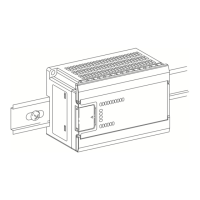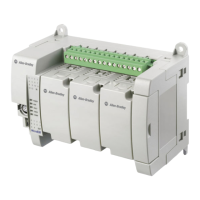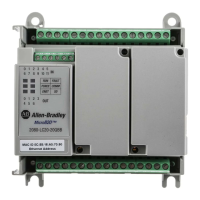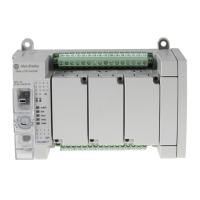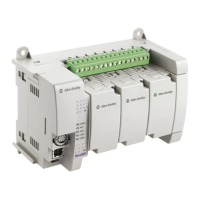Publication 1763-RM001C-EN-P - October 2009
Using High-Speed Outputs 129
2. The PTO instruction is started, and pulses are produced based on
the accelerate/decelerate (ACCEL) parameters, which define the
number of ACCEL pulses and the type of profile: s-curve or
trapezoid.
3. The ACCEL phase completes.
4. The RUN phase is entered and the number of pulses defined for
RUN are output.
5. The RUN phase completes.
6. Decelerate (DECEL) is entered, and pulses are produced based on
the accelerate/decelerate parameters, which define the number of
DECEL pulses and the type of profile: s-curve or trapezoid.
7. The DECEL phase completes.
8. The PTO instruction is DONE.
While the PTO instruction is being executed, status bits and information
are updated as the main controller continues to operate. Because the PTO
instruction is actually being executed by a parallel system, status bits and
other information are updated each time the PTO instruction is scanned
while it is running. This provides the control program access to PTO
status while it is running.
The charts in the following examples illustrate the typical timing
sequence/behavior of a PTO instruction. The stages listed in each chart
have nothing to do with controller scan time. They simply illustrate a
sequence of events. In actuality, the controller may have hundreds or
thousands of scans within each of the stages illustrated in the examples.
Conditions Required to Start the PTO
The following conditions must exist to start the PTO:
• The PTO instruction must be in an idle state.
• For idle state behavior, all of the following conditions must be met:
TIP
PTO status is only as fresh as the scan time of the
controller. Worst case latency is the same as the
maximum scan of the controller. This condition can be
minimized by placing a PTO instruction in the STI
(selectable timed interrupt) file, or by adding PTO
instructions to your program to increase how often a
PTO instruction is scanned.
efesotomasyon.com - Allen Bradley,Rockwell,plc,servo,drive
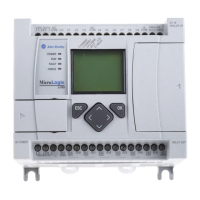
